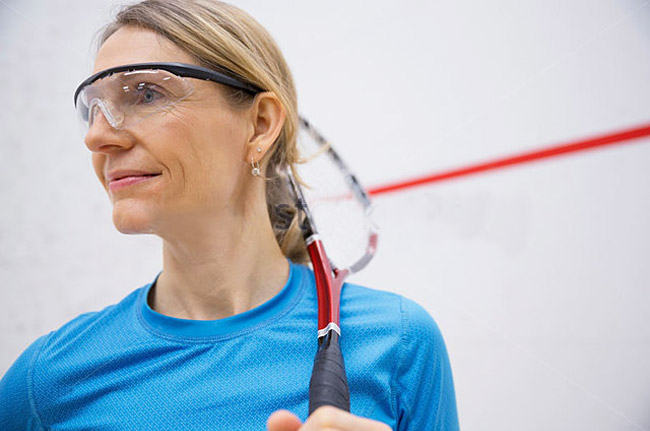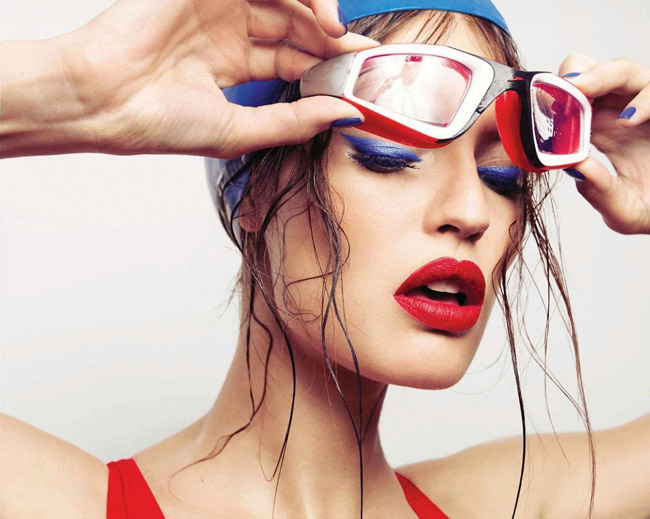
If there’s one event that brings people across the globe together, it’s the Olympics! And we are eagerly looking forward to the 2018 Winter Olympics to be held in PyeongChang, South Korea from Friday, Feb. 9 onwards. We wish all the participants to give in their best and shine out.
Tens of thousands of sports and recreation-related eye injuries occur each year. The good news is that 90 percent of serious eye injuries are preventable through use of appropriate protective eyewear.
Sports-related eye injuries occur most frequently in baseball, basketball and racket sports. Boxing and full-contact martial arts pose an extremely high risk of serious and even blinding eye injuries. There is no satisfactory eye protection for boxing, although thumbless gloves may reduce the number of boxing eye injuries.
In most sports, vision drives performance. So to excel during competition, you should make sure your eyesight is in top shape. Even if you have 20/20 vision, the right sports eyewear can reduce glare and enhance contrast to help you see even better and react faster.
Protective Eye Wear
- For most repair projects and activities around the home, standard ANSI-approved protective eyewear will be sufficient.
- In sports like baseball, ice hockey and men’s lacrosse, a helmet with a polycarbonate (an especially strong, shatterproof, lightweight plastic) face mask or wire shield should be worn at all times. It is important that hockey face masks be approved by the Hockey Equipment Certification Council.
- Protective eyewear with polycarbonate lenses should be worn for sports such as basketball, racquet sports, soccer and field hockey. Choose eye protectors that have been tested to meet the American Society of Testing and Materials (ASTM) standards or that pass the CSA racquet sports standard.
- Ski goggles should be considered a must on the slopes, and face shields (either “cages” or clear polycarbonate shields) should always be worn by catchers in baseball or softball, and by anyone playing hockey, football or paintball.
Although kids may resist the idea of wearing safety glasses during sports, parents and coaches should insist. And if you or your child play paintball, do so only at facilities that require continuous wear of polycarbonate shields. Safety eyewear also is a requirement for participation in Little League baseball.
BUYER’S GUIDE TO SPORTS EYEWEAR
| Sport | Recommended Eyewear Features |
|---|---|
| Badminton | Protective sports eyewear (goggles or glasses made with polycarbonate or Trivex lenses). |
| Baseball | For batting and base running: Helmet with attached polycarbonate face shield.
For fielding: Sports goggles or sport sunglasses with shatter-proof lenses and an attached head strap. |
| Basketball | Wraparound sports goggles or glasses. |
| Bicycling | Performance sunglasses with anti-fog and anti-scratch lens coatings. |
| Boxing | There is no protective eyewear for boxing. Keep in mind the risks you take when stepping into the ring and make sure you get regular eye exams to check for scratched corneas (corneal abrasion) and retinal detachment. |
| Fencing | Full-face protective mask made of a fine mesh of rigid metal. |
| Field Hockey | All players: Sports goggles with secure head straps.
Goalies: Full helmets and face masks. |
| Fishing | Polarized sunglasses with anti- |
| Football | Polycarbonate shield attached to helmet. |
| Golf | Polarized sports sunglasses. |
| Handball | Sports goggles with polycarbonate or Trivex lenses. |
| Hunting and Shooting | Polarized, shatter-resistant shooting glasses. |
| Ice Hockey | Full-face helmet. |
| Lacrosse | Form-fitting and padded face mask. |
| Paintball | Full-face helmet. |
| Racquetball | Sports goggles with polycarbonate or Trivex lenses. |
| Skiing and Snowboarding | Ski goggles or wraparound polarized sunglasses with mirror-coated lenses. |
| Soccer | Sports goggles. |
| Softball | For batting and base running: Helmet with attached polycarbonate face shield.
For fielding: Sports goggles or sunglasses with shatter-proof lenses with an attached head strap. |
| Squash | Sports goggles or glasses. |
| Street Hockey | All players: Sports goggles with secure head straps.
Goalies: Full helmets and face masks. |
| Swimming and Diving | Swim goggles and diving masks. |
| Tennis | Sport sunglasses with a lightweight wraparound sport frame and polycarbonate lenses. |
| Track and Field | Lightweight wraparound sport frame with polycarbonate lenses to protect against wind and debris. |
| Volleyball | Sports goggles or sunglasses. |
| Water Polo | Swim goggles with polycarbonate or Trivex lenses. |
Getting the best possible eyewear to maximize your sports performance starts with your eyeglasses prescription. Make sure your prescription is up-to-date, and tell your eye doctor which sports you enjoy.
